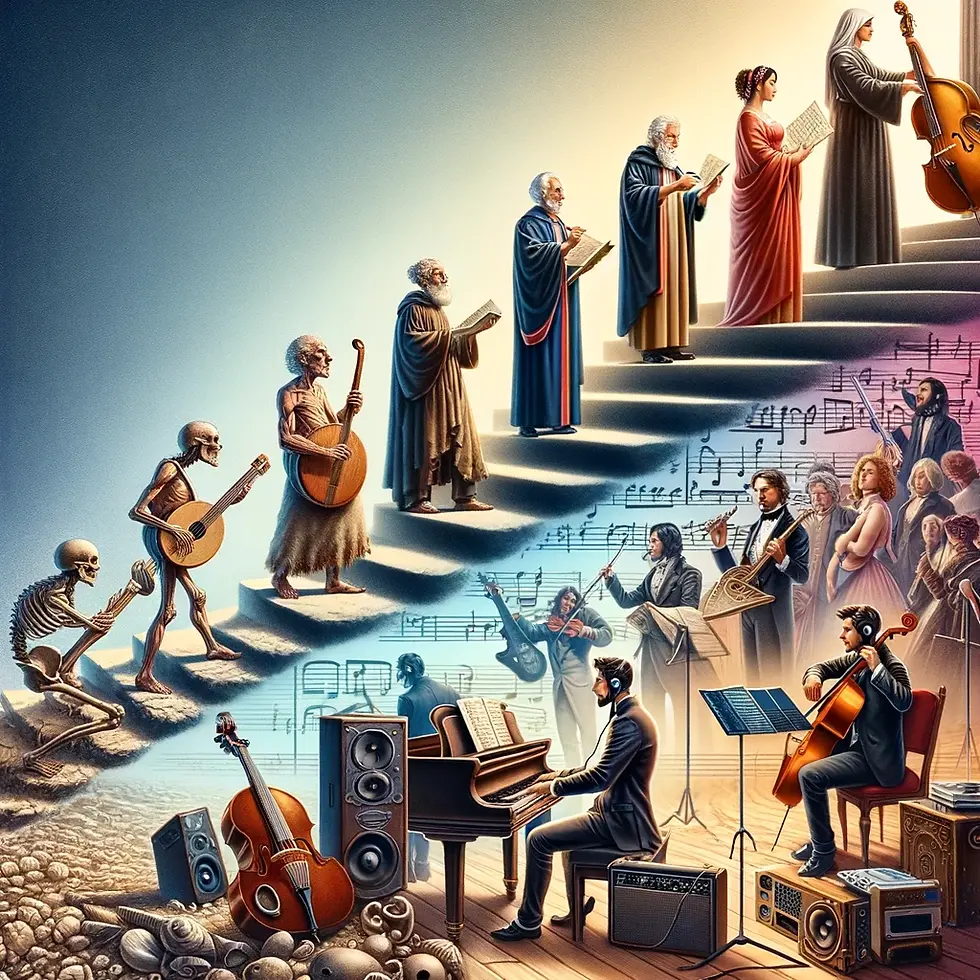The roots of music trace back to prehistoric times, where early humans used primitive instruments and vocal sounds to communicate and express emotions. Ancient civilizations, such as those in Mesopotamia, Egypt, and Greece, developed more structured musical systems, often intertwined with religious rituals and communal activities.

Greek philosophers like Pythagoras explored the mathematical foundations of music, laying the groundwork for Western musical theory. In China, early forms of music included ceremonial compositions that reflected Confucian ideals, emphasizing harmony and order.
The Middle Ages to the Renaissance
During the Medieval period (approximately 500 to 1400 AD), music was predominantly sacred and vocal, dominated by Gregorian chant. The development of musical notation in the 9th century allowed for the preservation and dissemination of complex compositions.
As the Renaissance emerged (1400-1600 AD), music saw a shift towards more secular themes and the use of harmony and polyphony. Composers like Giovanni Pierluigi da Palestrina and Thomas Tallis expanded the expressive capabilities of music, leading to more intricate and emotive works.
The Baroque and Classical Eras
The Baroque period (1600-1750) introduced greater complexity and ornamentation in musical compositions. Composers such as Johann Sebastian Bach and George Frideric Handel created elaborate fugues and concertos that showcased their technical prowess.
The Classical era (1750-1820) followed, emphasizing clarity, balance, and form. This period saw the rise of symphonies, sonatas, and string quartets, with luminaries like Wolfgang Amadeus Mozart, Ludwig van Beethoven, and Franz Joseph Haydn shaping the future of Western classical music.
The Romantic to the Modern Periods
The Romantic era (1820-1900) brought an increased emphasis on emotional expression and individualism. Composers like Franz Liszt, Richard Wagner, and Pyotr Ilyich Tchaikovsky created dramatic, powerful works that often drew inspiration from literature and national folklore.
The 20th century introduced a vast array of styles and movements, from the atonality of Arnold Schoenberg to the jazz innovations of Duke Ellington and the rock and roll revolution of the 1950s. This period also saw the rise of electronic music, which opened new avenues for sound creation and manipulation.
Contemporary Music
In the 21st century, music continues to evolve rapidly with advancements in technology and globalization. Digital platforms have democratized music production and distribution, allowing independent artists to reach global audiences.
Genres have become increasingly fluid, blending elements of classical, jazz, rock, hip-hop, and electronic music. Composers and artists today often draw from a rich tapestry of cultural influences, creating a diverse and dynamic musical landscape.
Positive Impacts on Generations
Cultural Preservation and Innovation: Music has preserved cultural traditions while fostering innovation, enabling societies to retain their heritage and evolve creatively.
Emotional Expression and Mental Health: Music serves as a powerful outlet for emotional expression and has been shown to improve mental health and well-being.
Social Cohesion: Through communal activities and shared experiences, music has strengthened social bonds and fostered a sense of belonging.
Educational Benefits: Music education enhances cognitive abilities, including memory, attention, and spatial-temporal skills, benefiting academic performance.
Economic Opportunities: The music industry has created numerous economic opportunities, from performance and production to technological development and marketing.
Music's journey from ancient times to the modern era highlights its enduring power to inspire, connect, and transform societies across the globe








.jpeg)
